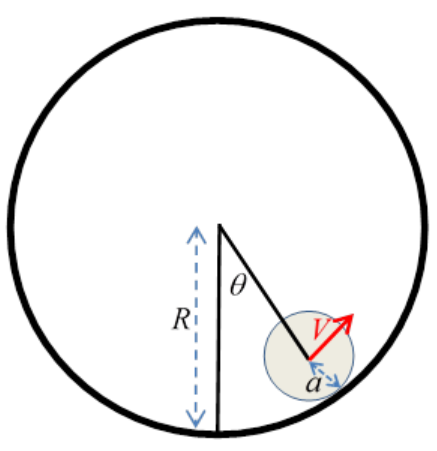25.4: Cylinder Rolling Inside another Cylinder
( \newcommand{\kernel}{\mathrm{null}\,}\)

Now consider a solid cylinder radius a rolling inside a hollow cylinder radius R, angular distance from the lowest point θ, the solid cylinder axis moving at V=(R−a)˙θ and therefore having angular velocity (compute about the point of contact) Ω=V/a.
The kinetic energy is
12MV2+12I(V/a)2=12(M+Ia2)(R−a)2˙θ2
The potential energy is −Mg(R−a)cosθ.
The Lagrangian L=T−V, the equation of motion is
(M+Ia2)(R−a)2¨θ=−Mg(R−a)sinθ≅−Mg(R−a)θ
so small oscillations are at frequency ω=√g(1+IMa2)(R−a).


